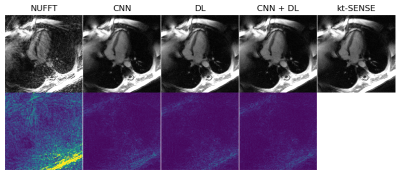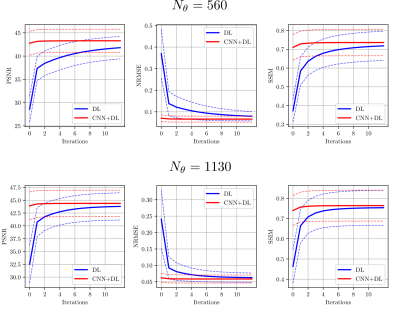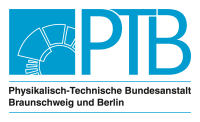Andreas Kofler1, Tobias Schaeffter1,2,3, and Christoph Kolbitsch1,2
1Physikalisch-Technische Bundesanstalt, Berlin and Braunschweig, Berlin, Germany, 2School of Imaging Sciences and Biomedical Engineering, King's College London, London, United Kingdom, 3Department of Biomedical Engineering, Technical University of Berlin, Berlin, Germany
1Physikalisch-Technische Bundesanstalt, Berlin and Braunschweig, Berlin, Germany, 2School of Imaging Sciences and Biomedical Engineering, King's College London, London, United Kingdom, 3Department of Biomedical Engineering, Technical University of Berlin, Berlin, Germany
Here, we consider a image reconstruction method for dynamic cardiac MR which combines Convolutional Neural Networks (CNNs) with Dictionary Learning
(DL) and Sparse Coding (SC). The combination of CNNs with DL+SC improves the results obtained with CNNs and DL+SC used separately.

Figure 4: An example of results and corresponding point-wise error-images obtained for an acceleration factor of $$$R=18$$$. From left to right: The initial NUFFT-reconstruction obtained from $$$N_{\theta}=560$$$ radial spokes, the CNN-regularized solution10, the DL+SC-regularized solution7, the proposed method and the $$$kt$$$-SENSE reconstruction obtained from $$$N_{\theta}=3400$$$ radial spokes from which the $$$k$$$-space data was retrospectively simulated.

Figure 2: Convergence results for the proposed method (red) compared to DL and SC (blue) for the two acceleration factors $$$R=18$$$ and $$$R=9$$$ given by $$$N_{\theta}=560$$$ and $$$N_{\theta}=1130$$$ radial spokes, respectively. The solid lines correspond to the mean value of the respective mesure obtained over the entire test set. The dashed lines correspond to the mean $$$\pm$$$ the standard deviation obtained over the test set.
Note that the values differ from the ones shown in the Table because here, no masks were used to restrict the calculations to a region of interest.
